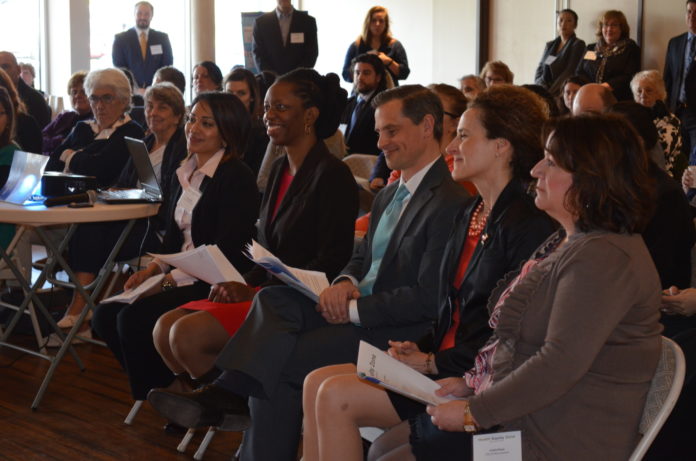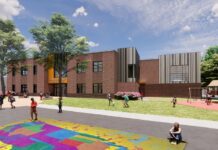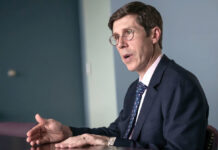
PROVIDENCE – One year from now, Director of Health Initiatives Susan Jacobsen at Thundermist Health Center hopes to have answers to her questions: “What does a healthy Woonsocket look like?” “Where are we now in [fulfilling that vision]?” “What do we need to make that happen?” By April 2017, Jacobsen anticipates that the Woonsocket Health Equity Zone will have a data-driven plan, with a report card of real measurements, as well as personal stories, evaluating those questions.
These aren’t just pie-in-the-sky dreams; Thundermist is the backbone agency and fiscal agent for the Woonsocket HEZ, one of 11 such zones in Rhode Island created to address site-specific public health inequities. As did every HEZ in Rhode Island, the Woonsocket HEZ received Centers for Disease Prevention and Control funds administered by the Rhode Island Department of Health. In the first grant year (April 2015 to March 2016), CDC allotted $307,338 (from which $188,988 was used by Thundermist for backbone operations and capacity building) and this year, $365,000 (for which $119,000 is allocated to Thundermist for backbone operations), said Jacobsen, noting that some Woonsocket HEZ initiatives received additional funds from other sources, including DOH and the U.S. Department of Agriculture. Statewide, for all the HEZs, the CDC, through DOH, gave $5.5 million for the first two years of the grant, which includes $200,000 in DOH funds, said Joseph Wendelken, DOH spokesman.
Through a needs assessment conducted by Thundermist and its 16 lead partners in the Woonsocket HEZ – representing the public and nonprofit sectors, they identified lack of access to healthy food and recreation, high rates of teen pregnancy, trauma, domestic violence and accidental drug overdoses as core issues. Even before this HEZ was formed, Thundermist had a long history of collaborations with Woonsocket’s social services and health care agencies, police, fire, emergency medical services and schools, said Thundermist President and CEO Chuck Jones.
With the assessment completed and recommended solutions agreed upon, Woonsocket HEZ representatives welcomed Executive Office of Health & Human Services & Human Services Secretary Elizabeth Roberts, Department of Health Director Dr. Nicole Alexander-Scott, Director of Elderly Affairs Charles Fogarty and Gov. Gina M. Raimondo’s husband, Andy Moffit, to Woonsocket on March 31.
Events included a briefing on HEZ’s first-year accomplishments, a ceremony highlighting the innovative new partnership with a local school to support job training and lead prevention poisoning and lunch at a local senior center. The program also included a tour of a culinary incubator space under construction at NeighborWorks Blackstone River Valley. That space will satisfy one objective – that of creating a community headquarters for food access, activities and information in Woonsocket – outlined in a March 31 Woonsocket HEZ Food Access Plan, which was prepared by KarenKarp&Partners, a consulting firm whose website asserts “good food is good business” Fifty-three percent of residents surveyed are “food insecure,” fearing their food would run out before they had money to buy more and 28 percent of those surveyed wanted a more convenient grocery store, according to the food plan.
“Health does not begin in the doctor’s office. Health starts in the places where we live, learn, work and play,” Alexander-Scott said in a statement. “The innovative work being done by the Woonsocket HEZ demonstrates how communities can come together to make changes that support healthy living.”
Given the city’s particularly challenging metrics, the Woonsocket HEZ has an ambitious agenda to reduce deleterious health inequities; some health challenges may begin before birth. Woonsocket was among the top three or four Rhode Island cities recording the largest percentage of infants born in 2014 who met all three risk factors (born to a mother without a high school diploma, to a single mother and to a mother younger than age 20). The 2015 Rhode Island KIDS COUNT Factbook, the source of those statistics, lists those factors under the heading, “Infants Born at Highest Risk.” One in nine girls ages 18 and 19 have given birth in Woonsocket; only 6 percent of teens accessing Title X family planning services use long-acting reversible contraceptives, the HEZ report found.
Other sobering statistics are noteworthy: Rhode Island Department of Education data indicate that 19.7 percent of Woonsocket High School students dropped out in 2014-15, compared to a 6.7 percent statewide dropout rate. The rate of child abuse in Woonsocket is 2.5 times that of the rest of Rhode Island, the HEZ report found.
In addition to building the culinary incubator space and other food-related programs, the Woonsocket HEZ has proposed or already implemented solutions that include, among others, creating a free community drop-in center for adults in recovery, hiring nine community ambassadors as community catalysts, increasing access to long-acting reversible contraceptives for teens, engaging teens in a teen leadership committee, screening and referring individuals impacted by trauma to appropriate agencies and increasing walkability and safety in Woonsocket.
“All of us can do really good work, [but] funding in the past has been disjointed. To improve a community’s health, we need to work together and work with people who live in Woonsocket,” said Jacobsen. “Our approach is really bottom up, as well as top down. We’re bringing a broad coalition together, from the education sector, the business community, health and human services sector, the city of Woonsocket and residents to create a shared vision. Then, we determine how we measure it and hold ourselves accountable. That’s really different.”












